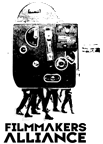The New Model Of Indie Film Finance, v2011.1 Necessary Attributes
by Ted Hope
Last month, I started laying out what I felt was the necessary attributes of a project to get financed within the mainstream indie film industry these days, call it my IndieFilmFinanceModelv2011.1. Those posts have focused on budgets, foreign estimates & value, US acquisition price, and the type of investors involved in films these days. Today, we will look at other attributes that make a film viable for acquisition in different markets.
You might as well as forget about hypothesizing about the percentage of your negative cost that you might recoup in the US or foreign Acquisition Markets; they have to want in you the first place to qualify for such a gift. Why do you think your film will you get picked up? We are talking about a market, and for there to be a market, there has to be demand and desire. First thing you have to do is manufacture desire.
I see two principals usually at play in terms of manufacturing desire in the fields of indie acquisition: freshness and the ability to cut through the noise. Freshness is a close cousin of originality, but without the latter’s capacity for daring. Freshness’s greatest quality is its scarcity of stale. Freshness cuts through the noise in that it is sure to generate its own noise. The familiar cuts through the noise too but is never really fresh. “Trusted sources” do likewise and no longer have the burden of being fresh on them (or is it that they are eternally fresh?). Certain actors at certain times deliver both qualities, and they generally will not be the same ones that also possess that illusive foreign value—leaving the filmmakers needing to cast in two directions at once—that is if they want this IFFmodel to work.
If you are trying to get your project financed in the mainstream industry, it is important to remember that the movie business is all about people keeping their job. If you are trying to work in the business side of things, you have to look out for all your collaborators. On the finance side, what are your potential collaborators trying to determine with your film? You need to show them that there is an audience for your project that is reachable. The more that a film team has aggregated its potential audience in advance of shooting, the easier time the executive that is championing you is going to have getting your project greenlit. The more engaged that audience already is with both the subject matter and team, the easier it will be to roll film (or record x’s & o’s).
Fortunately, the script and the vision for a project still carry some weight in this world. Yet, many filmmakers miss what this really means in today’s terms. It is not just the conception and execution that is important here, but also the distance those elements have traveled and construction that they’ve generated around them.
For instigating value (the financial amount that a 3rd party accesses your project to be worth that actually allows you to raise funds) to be set on a film idea, we have to create an aura of inevitability around it. If that script still has room for notes and improvements, the financiers will delay their decision—for they believe all others will do likewise. There won’t be the call to action until they feel they know absolutely what they are getting. If an investor’s reader can still ask a question that starts with “why does…”, chances are they won’t finance your film. You get once chance these days to finance your project, and that requires a truly finished script.
Creating an aura of inevitability requires creating a fuller vision than what a script or a track record can provide. Image books certainly help, but show reels are becoming even more commonplace these days. When we hear tales of Michel Gondry and Aaron Ekhardt creating show reel for their collaboration, it doesn’t even matter if it is true or not; those of lesser genius than those men damn well better show what they got if they want to get it going. You have to come from a place of tremendous privilege to not have to demonstrate your vision prior to receiving funds. In addition to our image books, it’s time we started preparing to create show reels to jump start our projects.
As crucial as that quality of inevitability is, urgency is equally necessary. No one is going to act these days until they have to. Frequently urgency is created by market demand. If buyers and financiers all want your project, the urgency comes from fear of losing it. But we’ve been in a buyer’s market for some time now, and generally buyers are willing to wait until the last moment to acquire something. Urgency now is generally determined by availability of actors, locations, and seasons. Timing of the submission of a project for financing needs to balance realistic expectations with the potential to stimulate a sense of urgency.
Beyond strategies to stimulate commitment, some of the standard qualities still hold true. Of course the content of the script still matters, and in these times of mitigated risk it probably matters even more so than before. Yes, it needs to be “good”, but it also needs to have a proven audience and to somehow be fresh. Frequently these are looked at a contradictory elements: the need to be recognized as previously successful, and the need to not be like what has come before it. We tend to tread into genres to fulfill the prior demand: we know where to find or how to attract the fans of horror, thrillers, and several other genres. To commit to satisfying the dictates of these genres will increase that illusive foreign value. To also make it fresh, will create the hope and anticipation that you might be able to rise above the genre’s previous expectations.
So where does this leave as to determining to the model for IndieFilmFinanceV2011.1? Next week, I will recap and then provide the math. It is almost as simple as 1+1=2.
Yeah, right…















I appreciate you posting the steps. They are definitely worth the read. Businesses should be careful with their advertising expenses. It is also important to know connections and use them wisely. But it is especially important to keep client relationships open.
ReplyDelete